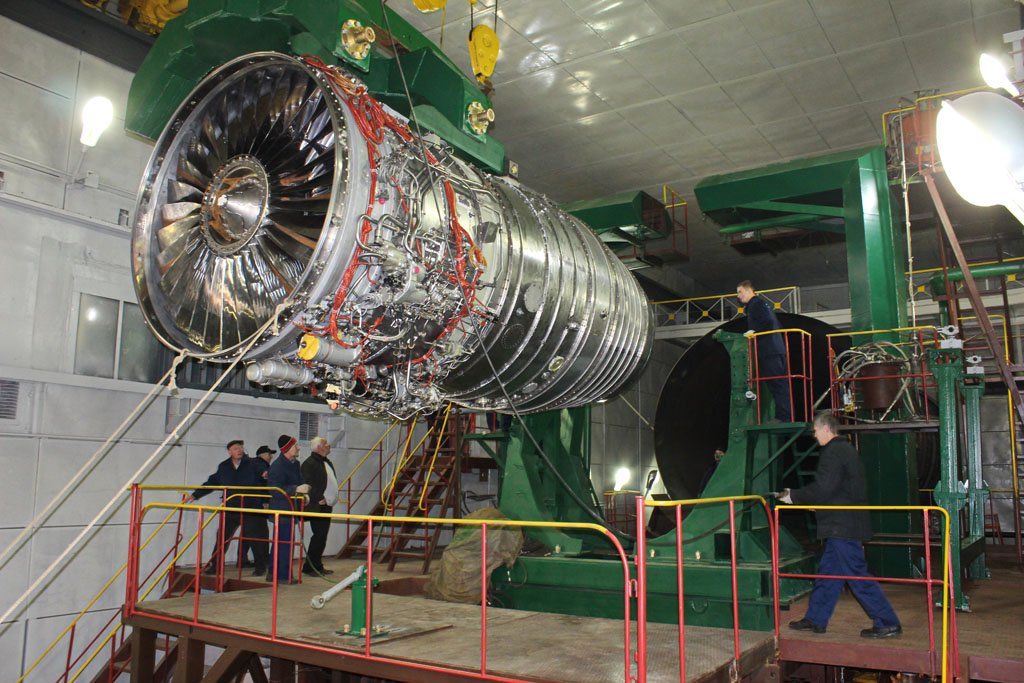
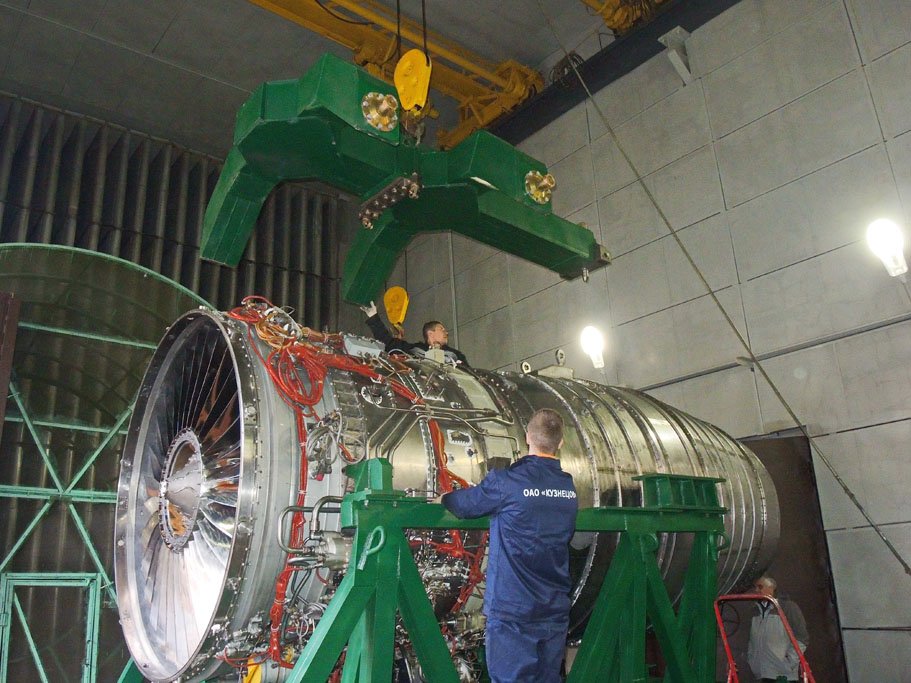


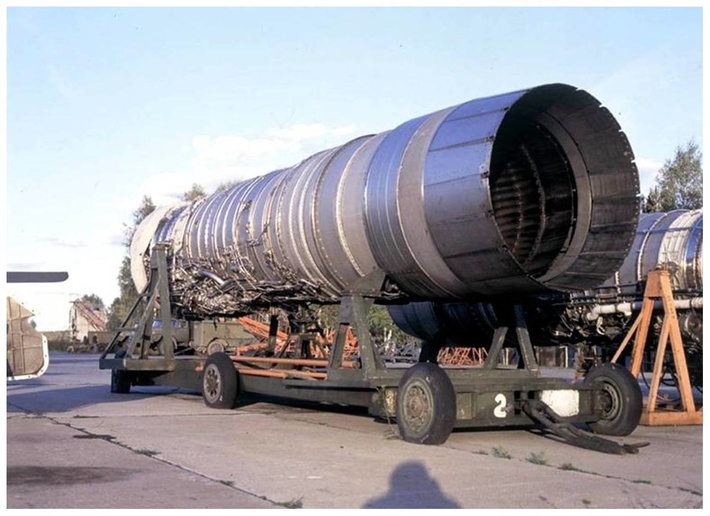
linkThe prototype model Tu-160M2 will go off the assembly line by 2019 updated by 60% in terms of technical parameters, the commander-in-chief of the Russian Air Force Viktor Bondarev said. Deputy Defense Minister Yuri Borisov also confirmed that the aircraft will be completely new. Adviser to the First Deputy Director General of the KRET (Concern of Radioelectronic Technologies) Vladimir Mikheev said that the Tu-160M2 will use the principle of integrated modular avionics, which allows the components of on-board electronics to replace and restore each other. Also, the missile carrier will be able to lay a course without a satellite system, due to the inertial navigation system BINS-SP-1. The technology makes it possible to determine the course of an airplane by recording the data of laser gyroscopes and quartz accelerometers.
Meanwhile, Russia's aerospace fleet will receive 16 upgraded Tu-160M with the updated engine NK-32-02. The aircraft will be equipped with modern onboard avionics, a new satellite navigation system. The onboard defense complex is modernized, which will allow carrying new types of missiles. Also, the system will allow highly accurate application of free-falling and guided missiles with a deviation of up to 20 meters.
The updated engine, according to Deputy Defense Minister Yuri Borisov, will increase the range of Tu-160M by 1,000 kilometers. At present, the maximum length of cruise bomber flight is 13 thousand kilometers. These characteristics allow the aircraft to deliver missiles to any point of the earth, and also for a long time to be in the air, leveling the advantage of a lightning-fast global nuclear strike by the enemy. Modernization will improve the economic performance of the engine, which will affect the fuel consumption.
The printed version of the material was published in the magazine "Vzlet" No. 4/2016The Central Institute of Aviation Motors (CIAM CIAM named after PI Baranov), which celebrated its 85th anniversary at the end of last year, is rightly considered the leading research organization of the aircraft engine building industry in Russia. The institute carries out a full range of research from fundamental and applied to engine testing in conditions as close as possible to operational ones, and also scientific support of all domestic developments in this field. In cooperation with the enterprises of the United Engine Building Corporation, CIAM participates in the design, development and certification of all Russian aircraft engines. The newest generation of turbojet engines for passenger and transport aircraft, the PD-14, is the first for all post-Soviet years to become an exception. On the work of the Institute on this engine and other promising areas of development of domestic aircraft building, Vzlyot spoke with the Director General of the CIAM Ts. P.I. Baranova "by Vladimir Babkin.
Vladimir Ivanovich, the PD-14 engine, which entered flight tests last fall, became the first civil turbojet of the new generation, developed in Russia after the collapse of the USSR. It is known that in the formation of its concept, development and testing, CIAM implements them actively. P.I. Baranova. Please tell us about the most important points of your institute's work on this project.
The work of the CIAM on a promising engine family, the first in which the PD-14 has now begun to be tested, began in 1999 with the development, jointly with TsAGI, of a technical design for applied research for a new generation turbojet engine. In 2000-2002, Together with the Perm Aviadvigatel JSC, the rational technical appearance of a prospective two-circuit engine with direct drive of a fan was formed, and since 2004 a program for creating a scientific and technical reserve for the development of its development has been implemented. This work CIAM conducted jointly with other leading industry institutions - VIAM, VILS, TsAGI - and enterprises of domestic engine building.
Scientific and technical reserve was created for all the key elements of the engine - a low-noise wide-chord fan, a high-pressure high-pressure compressor, a low-emission combustion chamber, chevron nozzles of various types. A large complex of work was carried out on the combustion chamber and turbine. New technical solutions, implemented on the basis of scientific research, were tested on CIAM stands.
Created by the beginning of development work on the PD-14 engine, the scientific and technical reserve allowed to lay down in its design a number of new solutions for domestic engine building that should ensure its competitiveness in the world market. It should be noted that at the stage of ROC on PD-14 within the framework of the JDC, a wide cooperation of domestic engine building enterprises was formed, while Aviadvigatel OJSC was designated as the lead developer, and CIAM - responsible for scientific and technical support of the works and co-executor in the development of all major units and engine systems.
In particular, in the institute, in cooperation with Perm colleagues, aerodynamic designs of a fan and a high-pressure compressor were performed. The model of the fan with retaining stages passed a test complex at our stand C-3A (now it is working out the measures to minimize fan noise). For the high-pressure compressor, several standard stages were experimentally tested in the CIAM: the first supercharged, middle and closing ones, on which the blades of different profiling (sickle and saber-shaped) were tested, their different combinations in the guiding apparatus and in the impeller, etc. At the stands UV-13 and Ts5-2, complex tests of the full-size combustion chamber were carried out, during which the specialists of CIAM and Aviadvigatel checked its operability in all modes, optimal fuel supply scheme has been determined, reliable start in flight conditions, a wide range of combustion in the low-gas mode, required unevenness of the temperature field are ensured.
A significant role in the provision of the required parameters of PD-14 was played by the expertise of the CIAM experts of high and low pressure turbines with the development of recommendations for their gas dynamic development. At the TC-2 stand, several design variants of both turbines were tested.
The major milestone in the course of the PD-14 program was the testing of the full-size engine started on the high-altitude stand C-1A of the CIAM Research and Test Center in the Lytkarino suburb near Moscow that allows simulating the entire range of flight conditions in which the engine will be further operated. In Russia, only our institute has such a stand. The first stage of the PD-14 tests at our high-altitude stand, during which the specified flight conditions were simulated at an altitude of 11 000 m with the M = 0.8, was completed in December 2015.
The high-speed characteristics of the engine were investigated, its controllability and starting characteristics, the thermal state of the structural elements and the operation of the cooling system in high-altitude conditions were estimated. The second stage of the tests is being prepared,
On the waiting list there is still work to test the fan PD-14 at the stand T14-01 for checking the localization of fracture when the blade is broken and with the casting of a large poultry, accelerating and equivalent-cyclic testing of the rotor parts at the RS-1D stand, fire tests of hull parts, and various units at the stand C17-G3, etc.
In addition, CIAM is engaged in the development of normative documentation and methods for carrying out strength studies, as well as directly testing the structural strength of materials - in fact, a significant number of new alloys are used on PD-14.
As you can see, the scope of work of our institute under the PD-14 program is very significant. I hope that the successful completion of all the foreseen tests, a significant part of which takes place in the CIAM, will allow the certification of the engine to be completed within the stipulated timeframe - in 2017.
What difficulties did you encounter in the work on PD-14? Have you managed to realize all that was conceived? Could you assess the level of perfection of PD-14 against the background of existing western competitors? Does it have advantages?
The main difficulty was due to the fact that at the time of the start of development work on PD-14 due to extremely inadequate funding in previous years, the scientific and technical reserve of a high level of technology readiness for a number of nodes and systems was not created in time. As you know, the engine of the new generation is created 1,5-2 times longer than the airframe, and OCD on PD-14 began 5 years later than the start of works on MS-21 (2005).
At the same time, in the course of development work, in a number of cases it was necessary to create not "advanced", but "catching up" the scientific and technical backlog, which led to delays with the approval of the typical engine design ensuring the fulfillment of all the requirements of the technical assignment. In this regard, the term of certification PD-14 had to be postponed to 2017, and on the first flight the MS-21 will rise not with the domestic engine, but with the American PW1400G. There are still many works on PD-14, however, there are positive trends.
If we compare the PD-14 with the PW1400G, then, recognizing that we are likely to yield somewhat in economy, we can not fail to note the smaller mass and diameter of the PD-14, and, consequently, the smaller external aerodynamic resistance of the domestic power plant. In addition, we have a lower gas temperature in front of the turbine, which simplifies the achievement of specified reliability and resource parameters. In addition, PD-14 is much cheaper than a western competitor and, according to preliminary estimates, will have lower costs for maintenance and repair. In general, the direct operating costs of the MS-21 aircraft with a domestic power plant may be about 2.5% lower. This is important for airlines-operators. But the main thing is not even that. The program PD-14 has become a kind of locomotive for the development of domestic aircraft engine building. After,
It is known that PD-14 should be the first in a family of promising new generation gas turbine engines. What, in your opinion, are the priority directions for modifying the basic engine?
Indeed, our institute is currently performing a large amount of work related to the plans for the further development of the PD-14 engine and the development of its modifications. First and foremost, this PD-14M with increased to 15.6 tons thrust and turbo PD-12V for heavy helicopters. In addition, the possibility of creating a reductor turbojet with a thrust of 18.7 tons - PD-18R and, conversely, less powerful turbojet engines for regional aircraft - PD-10 (10.9 ton-force) and PD-7 (7.9 tons) is being explored. On the basis of the PD-14 gas generator, it is planned to create also a line of ground-based industrial engines - for driving power plants and gas pumping units.
In the framework of studies on more powerful modifications of the PD-14 in the CIAM, work is under way on a fan with polymer composite working blades and on a reducer, which may be required for its drive.
At the last jubilee scientific and technical conference "Motors of the XXI century" held at the CIAM at the end of the jubilee scientific and technical conference "Aviadvigatel" OJSC and Samara JSC "Kuznetsov" presented their proposals for the creation of new turbojet engines for the remotorization of the heavy An-124 " Ruslan "and equipment of perspective wide-body aircraft. How does CIAM view a prospective TRDD with thrust of 30-35 tons? Does the institute already work in this area?
As is known, the domestic aviation industry currently does not produce two-circuit turbojet engines for passenger and transport aircraft with a thrust of more than 16-18 tons. At the same time, in order to maintain the competitiveness of Russian heavy-lift transport aircraft and to return our country to the market of long-haul wide-bodied aircraft, we need to create our own basic turbojet engine with thrust of 30-35 tons. We believe that it should be done on the basis of a unified gas generator, which can serve as the basis for a wide range of aircraft engines with thrust from 20 to 40 tons and power plants with a capacity of 30-60 MW.
In 2014 our institute, with the participation of TsAGI, UDK and Aviaprom OJSC, was entrusted with carrying out the research work "TRDD-30" ("Research in the field of creating a large thrust turbojet on the basis of a unified gas generator for perspective wide-body passenger and transport aircraft civil aviation "). In the framework of this research, the technical requirements for a high-thrust engine have been clarified, research has been carried out to determine its technical appearance and a list of critical technologies, and new models of scientific and technical solutions and technologies have been developed on models and experimental models.
Among the critical technologies that, in our opinion, it is necessary to implement to create competitive engines of this class is the creation of a fan of light polymer composite materials with an ultra-low peripheral speed of rotation (this will reduce the mass of the fan by 30% compared to the technology of hollow titanium blades, used on the PD-14 and significantly reduce the noise level), new low-emission combustion chambers, high-performance turbines.
Increasing the maximum total pressure build-up in compressors to about 60 will reduce the specific fuel consumption. Creating a highly efficient and reliable gearbox that transmits power to 50-60 MW with an efficiency of at least 99% will ensure a reduction in the number of stages of the turbine by half and a reduction in engine noise by 6-8 EPN dB. It is also necessary to work a lot in the part of creating new technologies for the manufacture of engine parts from advanced structural materials - intermetallides, incl. titanium aluminides (casings, blades, etc.), ceramic composites (parts of a turbine and combustion chamber), metallic composite materials (elements of fastening elements and shafts).
All this will require the implementation of a broad front of research in the framework of the state program "Development of the aviation industry for 2013-2025." Bringing new technologies to the 6th level of technological readiness with the creation and testing in a thermo-chamber of a high-altitude test stand of an experimental universal gas generator and demonstration engines will require modernization and creation of new stands for experimental research and testing of engines, their units and systems, including a new flying laboratory (for example, base An-124).
What is the general view of the CIAM line of domestic civil aircraft engines for the medium term? Is there already an understanding of how to further develop engines for passenger and transport aviation, for helicopters?
Today in CIAM, on the basis of the adopted system of levels of technological readiness, a long-term program for the creation of a scientific and technical reserve for engines of various classes and purposes has been formed. We believe that by 2020, up to the 6th level of technology availability, improved versions of PD-14 (for MS-21) and TV7-117 (for regional aircraft) should be brought.
For the next five-year period, by 2025, this draft level should be reached by the projects of a new turbojet engine with a thrust of 22 tons (for transport aircraft), based on the PD-14 PD-10 engine (for SSJ100 aircraft), and a new turbojet (for regional aircraft). Approximately by 2030 to the 6th level of readiness of technologies it will be possible to bring the program of a new TRDD with a thrust of 35 tons for long-haul aircraft,
In the part of helicopter powerplants we expect that by 2020 an improved (based on VK-2500) can be prepared, and by 2025 - and a fundamentally new (MPE) turbo-engine in the class of 2500 hp. At the same time, by the middle of the next decade, the project of a turbofan PD-12V engine in a class of 10 thousand hp is possible. For light aircraft and unmanned aerial vehicles, by 2020, a diesel engine can be built in the 500 hp class. and a small piston engine at 50-150 hp. respectively, and by 2025 - turbo-compound piston engine in the class of power of 500 hp. For airplanes of local air lines and light GTE in the class of power 350 hp. for UAVs. By about 2025, we expect the readiness of a new auxiliary power plant with a capacity of 500-700 kW, and by 2030
By increasing the parameters of the cycle, improving the nodes, and introducing new materials (primarily composite ones), the engines for civil and transport aviation by 2020 should be 5% more economical on cruising conditions and 40-50% more environmentally friendly by emission of nitrogen oxides relative to level, achieved now on the PD-14. By 2025, economy and environmental friendliness should increase by 10 and 60%, and by 2030 - by 20 and 65% to today's level, respectively. In parallel, the noise level will be consistently reduced.
The reduction in the specific fuel consumption of helicopter engines, relative to today's VC-2500, is estimated at 5% by 2020, by 7% in 2025, and by 10% by 2030. This will be achieved by increasing the cycle parameters, applying dust protection devices with a high degree of purification, high-speed axial and centrifugal compressors, a multi-fuel low-emission compact combustion chamber, a high-speed, highly loaded single-stage compressor turbine, a free turbine with the opposite rotation of the rotor, an electric drive FADEC type combined with the system diagnostics, new materials, types of seals and bearings.
This is our forecast for the development of aircraft engine technology for the next 10-15 years. I hope that the great experience that has been accumulated in the eight and a half decades of CIAM's work, our scientific potential and effective cooperation with industry-leading enterprises and serial plants will make it possible to translate our forecasts into real aircraft engine projects for domestic aircraft and helicopters.
Artist's concept of a Soviet SS-NX-23 ballistic missile being launched from a Delta III-class nuclear-powered ballistic missile submarineSecret CIA Docs Reveal What Worried US Intel Most About Soviet Navy CapabilitiesCC0
MILITARY & INTELLIGENCE
14:39 09.09.2017
The Central Intelligence Agency has released some 2,000 pages of formerly classified materials on the Soviet Navy during the Cold War. Military observer Andrei Kotz takes a look at some of the most fascinating conclusions Western intelligence analysts reached about the Soviet Navy's presumed strengths and weaknesses.
The trove of documents, encompassing 82 reports spanning three decades, from the 1960s to the 1980s, includes everything from translations of materials from 'Military Thought', a Soviet military journal, to high-level US national intelligence estimates of Soviet naval power, to agency reports focused on subs, carriers, cruise missiles, and more.
The documents confirm that the US military leadership saw the Soviet Navy as a serious threat to US naval hegemony, and that they allocated generous funding to intelligence studies on the subject. The materials touched on practically all aspects of Soviet naval military thought, from the characteristics of its ship-based anti-aircraft missile systems, to the tactical configuration of submarine strike groups.
Vladimir Kozhin: S-400 contract with Turkey signed, about to be executed
Military & Defense September 12, 8:20 updated at: September 12, 9:00 UTC+3
The presidential aide for military-technical cooperation has spoken to TASS about Russia's military-technical exhibitions, promising deals and the impact of Western sanctions
Russian presidential aide for military-technical cooperation Vladimir Kozhin© Mikhail Metzel/TASS
This past summer was very eventful in the military-technical sphere. First and foremost there were three major international weapons shows – Army-2017, Moscow aerospace show MAKS, and International Maritime Defense Show (IMDS-2017), where despite Western sanctions Russia signed a number of major contracts and intergovernmental agreements.
Russian presidential aide for military-technical cooperation, Vladimir Kozhin, reviewed the results of these events, the conclusion of a number of major military-technical contracts, including those with Turkey for the supply of S-400 air defense systems and also promising agreements in that sphere that may materialize by the end of 2017 in an interview granted to TASS.
- Did Army-2017, MAKS-2017 and IMDS-2017 rise to the expectations of the military-technical sphere captains and the main manufacturers?
READ ALSO
Russian defense contractor reveals deals signed at Army-2017 forum
Putin praises Army-2017 international military forum
MAKS-2017 airshow yields contracts worth over $6bln
Putin welcomes MAKS airshow as venue to promote Russian aircraft on global markets
- It is true that last summer’s schedule was very tight. We don’t have so many specialized exhibitions each year. I can tell you right away that the achieved results are rather high. All events received extensive media coverage. All those who wished were able to see our military equipment live and in action. In the wake of the exhibitions the feeling we are on the right track has grown much stronger. There were no signs of isolation in military-technical cooperation. All exhibitions gathered many foreign delegations. First and foremost, among the participants we saw the main or most promising potential buyers of weapons and military equipment. Of course, there were countries from South East Asia, Central Asia and Latin America. Quite a few meetings and negotiations were held.
Now, some facts and figures. Army-2017 attracted 114 delegations. This is not exactly what can be called isolation, right? There was a very tight business program not only from the standpoint of meetings and talks. There were sessions of three inter-governmental commissions for military-technical cooperation with Bolivia, Sudan and Kyrgyzstan. A new inter-governmental agreement on military-technical cooperation with Niger was concluded. The total value of contracts signed at the Army-2017 forum in Kubinka reached about $300 million. This list includes the supply of Sukhoi-30SM planes to Kazakhstan and of helicopters Mi-171Sh to Burkina Faso and a number of other agreements.
READ ALSO
Russia's military might on display at Army-2017 forum
As for the combined effect of all three summer exhibitions, I should also mention the contracts to provide helicopters for China, several extra contracts complementing the previously concluded agreements to sell military equipment to Zambia and a number of arrangements for post-sale maintenance of our hardware, including aircraft. For instance, with Malaysia. In a word, contracts, agreements, protocols and memorandums on military-technical cooperation concluded last summer are many and their geographic scope is a reason for optimism.
Incidentally, our exhibitions were attended by some countries that in the current political situationmight stay away by all odds, because they are members of NATO. For instance, with Bulgaria an agreement was concluded on the repairs and maintenance of helicopters being used in Afghanistan.
- What can you say about the European exhibitions, for instance, Le Bourget, in the context of the continuing sanctions? Did Russian companies feel isolation?
- At such events a great deal depends on the organizers. At the latest Le Bourget show our delegation was present as a full-fledged member. It conducted negotiations with the partners it was free to choose. But there is also Britain’s Farnborough, for instance. Its organizers’ stance is different, so we preferred to refrain from participation in the latest British air show of our own accord.
- What most significant events would you single out at the three Russian shows?
- As I’ve already said, there was an important inter-governmental agreement with Niger, which paves the way for our further cooperation. It is possible conduct no end of negotiations, but as long as there is no basic document words will remain words. We signed a fundamental agreement with Niger. It is a large African country with a vast potential. Specific work on its requests is about to begin.
READ ALSO
Russia to fine-tune MiG-29N fighter jets for Malaysia
Russia to supply another batch of transport helicopters to China in 2018
Russia may supply first ten Ka-226T helicopters to India in 2017
Russia to sign contract with India on S-400 air defense missile system deliveries
On the sidelines of the Army-2017 show there was a meeting of the observer council of our joint venture with India that manufactures Brahmos missiles. The venture’s future development and guidelines for the promotion of its products to the market were discussed. As for the specific contracts concluded at the summer shows, I’ve already mentioned the most important of them. Quite a few remarkable memorandums were signed with Israel and Malaysia. They precede contracts proper. But at the same time they are rather important and many of them incorporate the parties’ concrete liabilities, and not just fine intentions.
- Russia’s victory in the bidding contest to provide Ka-52K helicopters for Egypt’s Mistral amphibious assault ships made headlines last summer. What about the other equipment for the helicopter carriers? When do you expect the conclusion of contracts for helicopters and other military technologies?
- Let’s talk about helicopters first. It is true, we won the context, but that does not necessarily mean that a contract is signed instantly, although huge piles of work have been handled and everything is pretty close to the moment when the Ka-52K contract will be inked. I do hope this will happen soon. It goes without saying that without the navigation equipment and command and communication centers the helicopters may have problems with keeping in touch with the ship.Talks on this theme are in progress, but at this point I cannot yet say that there is a contract. One should take note of our advantage over competitors, bearing in mind that the helicopters are of Russian manufacture. The Mistral ships were custom-made to accommodate our helicopters. We hope that the talks will yield positive results.
- There has been much talk about the provision of project 11356 frigates for India. When will Russia and India come close to concluding this contract? What power plants will be installed on the frigates to be built at an Indian shipyard? The Russian Navy’s Deputy Commander for Armaments, Viktor Bursuk, said that a second troika of these frigates would be built at the Yantar shipyard for the Black Sea Fleet, although the original intention was to sell two of the three to India. Will you please explain how will it all look like in the end?
READ ALSO
Project 11356 frigate
Two frigates of 11356 project to be finalized for Indian Navy
- As far as these frigates and their delivery are concerned, we hope that all final contracts will be signed by the end of this year. Under the terms of the contract we are to build the frigates. India is to purchase the power plants on its own. We know that the power plants will be Ukrainian, but that’s the customer’s realm of responsibility. India confirms that it is moving in this direction. We will honor our obligation regardless of the circumstances. I would prefer to say nothing about the state defense order or comment on what Defense Ministry officials say. These two themes are in no way related with each other.
- You said that Indonesia, the Philippines and Thailand would like to purchase Russia’s project 636 submarines Varshavyanka. At what stage is the negotiating process at the moment? And when will it be possible to say specific contracts may be concluded?
Sixth Varshavyanka class diesel submarine joins Russian Navy
- It is true that the Philippines, Indonesia and Thailand have taken interest in these submarines. Their technical parameters and the price-quality ratio as they are, these submarines are among those most in demand in the world. Negotiations with all three countries are underway, but it is too early to say that a contract with any of them may be signed tomorrow. It should be remembered that a submarine is much more complex than a battle tank. Building it is a time and effort-consuming process. Also, the customer is to have a special infrastructure where ships of that class are based. The process is not a fast one, but the talks proceed. There is hope that in the future we will forge specific agreements.
- Although our submarines are one of the best, the share of naval technologies in the overall contract portfolio is not as great as we would like it to be. What’s the outlook for promoting our naval technologies to new countries and regions? What might help build up its share in the overall export?
According to our estimates, in 2017-2025 Russia’s export of naval hardware may be up to $40 billion
- For now naval technologies come second after aircraft, ground systems and air defense weapons. This concerns the annual amounts and the effective contracts. I believe that this trend will be changing because the prospects of marketing these armaments are very good. Practically any littoral country needs its own effective naval force. Some countries’ existing fleets require upgrading. Without a naval force it is impossible to protect the maritime border well enough or fight against piracy and poaching. Many countries have realized that protecting their offshore areas is entirely their own business. Naturally, there is great interest in naval technologies around the world and it will keep growing. We are holding many talks with various countries. There are such traditional partners as India and China, and also Indonesia, Thailand, the Philippines, some African countries and so on and so forth. Some would like to have our equipment right away, but there are problems with resources. Various payment schemes are being discussed. We are considering and analyzing them. Currently we have the full range of naval technologies on offer: submarines, frigates, patrol ships, speed boats and mine sweepers. There are all reasons to expect that that share of naval technologies in our export structure will be growing. According to our estimates, in 2017-2025 Russia’s export of naval hardware may be up to $40 billion.
- Next, to aircraft. You’ve said that a contract with Kazakhstan has been concluded for Sukhoi-30SM jets. Earlier, Kazakhstan declared the purchase of twelve such planes. How will it all work?
- It is true that this framework contract was signed at the international military-technical forum Army-2017. It will be implemented within the framework of the 2013 treaty on military-technical cooperation between Russia and Kazakhstan, which envisages direct interaction between the Irkut Corporation and Kazakhstan’s government-run enterprise Kazspetsexport. Under the terms of the contact it will be implemented step by step starting from the moment of its first delivery.
- A few words about another major aviation contract then. Rosoboronexport has already said that MiG-29 planes have begun to be delivered to Egypt. Photo news sections on some Egyptian websites confirm this. Official information on that score is scarce, though. When will this contact be implemented?
- Quite right. The contract has been signed. Some fighters have been delivered to Egypt already. About fifty planes will be provided over a period of several years. Everything will depend on the manufacturers’ capabilities. I am certain that we will cope with our contractual obligations on time.
- There have been conflicting reports about the contract with Indonesia for Sukhoi-35 jets. Wouldn’t you explain where these talks are at the moment? When can one expect the contract to be signed and how many planes would that country like to have?
- Our partners there wish to have a dozen planes. The situation looks like this. Indonesia has adopted a new law on the purchases of military products. It says that there must be a large offset component. India is pushing ahead with the Make in India program. Indonesia is proceeding in the same direction.
READ ALSO
Su-35 fighter jet
Indonesia clinches delivery contract for Russian Su-35 fighter jets
In fact, this project is a pilot one for the Indonesians and for us, too, from the legal point of view. We are well aware that the contract is now in the active development phase. We’ve made more than half of the way, but the contract has not been signed yet.
Different payment options are being discussed at the moment. They have offered to pay for part of the contract with return suppliers. This procedure is always rather complicated, but I believe that we will agree with that to a certain extent. They have formulated their proposals. We have them and are studying them. I do hope that the contract will be inked before the year is out.
- Of all items on the agenda of Russia’s military-technical cooperation with other countries the S-400 contact with Turkey drew the greatest attention, didn’t it? Opinions differ. Even high-ranking officials make conflicting statements. But nobody has said for certain if there is a contract or there is none. Couldn’t you please explain what the main problem is and what stage are the talks at now? Have an agreement been achieved and a contract concluded?
- The contract has been signed and it is about to be executed. As you may know, S-400 is one of the most complicated systems consisting of a large set of technical components, so there are quite a few nuances. I can merely guarantee that all of the decisions made under this contract strictly agree with our strategic interests. In that connection we find quite natural the reaction of some western countries that have been trying to put pressure on Turkey.
READ ALSO
Erdogan announces deal with Russia on S-400 air defense missile systems
Incidentally, I would like to point to one significant circumstance: there is a waiting list of likely buyers eager to have this system.
- Who is there in this queue of potential buyers?
- Southeast Asian and Middle Eastern countries and some CSTO member-states. There are many applications. A number of countries have taken specific interest in that system. But one should remember that it is a very expensive item of military hardware and far from everybody can afford it. The current contracts for these systems keep the manufacturers fully busy.
- Lately, remote-controlled systems have been mentioned ever more often. What is the share of drones in Russia’s export and will it be growing?
READ ALSO
Russia’s 6th-generation warplane to serve as transition to unmanned aircraft — commander
- Yes, we do have plans for building up their share. More than 50 applications are being worked on at the moment. I cannot say that we are one of the industry’s leaders, though. The United States and Israel are ahead, but Russia will certainly catch up. The Americans are developing not just reconnaissance systems meant for situation monitoring, but also attack systems on the basis of drones. We are carrying this kind of work, too, and already make a variety of unmanned systems. Also, we are holding talks with Israel over the possibility of some joint projects. In the overall amount drones account for no more than 2%-3%, but the share will grow considerably when a large variety of newly-designed products are about to begin to be batch-produced.
- Now, let’s move on to the next point – equipment for the ground forces. First of all I would like to ask about the contract for selling 64 T-90S/SK tanks to Vietnam? How is the work on it proceeding?
- The contract for providing T-90S tanks to Vietnam was signed last March and it is being implemented. The dates will depend mostly on the manufacturers.
- Will a contract for selling the T-90MS/MSK tanks to Kuwait be signed this year?
- The contract has not been signed yet, but I reckon it will materialize by the end of this year, bearing in mind the partners’ great interest and the active negotiating process.
- Are there any plans for more major events this year, something participants in military-technical cooperation and all those who keep an eye on this sphere may be looking forward to? Exhibitions, inter-government commissions, or major visits?
- As far as exhibition activity is concerned, the Dubai air show will be the largest event in the remaining months of this year. Russia has always taken an active part in the show, because the United Arab Emirates is our partner. Some major contracts with the UAE are being drafted and fundamental talks are underway with Saudi Arabia. By tradition we present the whole range of weapons at this exhibition.
READ ALSO
Russia's MC-21 jet may debut at Dubai air show in November
Bahrain this autumn will host a new regional exhibition and conference on security BIDEC (Bahrain International Defense Exhibition and Conference). Russia’s international show Interpolitex will be the last one on the list of 2017 exhibition activities.
As far as other significant events in the military-technical sphere are concerned, by the end of year there are to be meetings of inter-governmental commissions, committees and working groups with Armenia, Jordan, the United Arab Emirates, Iraq, Cuba, Cyprus, Serbia and a number of African countries –as a matter of fact we have some events every month.
- What contracts with the United Arab Emirates are due?
- The media have already mentioned some projects for cooperation in the sphere of armored vehicles, air defense and aviation. As soon as there are agreements, we will announce them.
- In what way has the operation in Syria influenced the export of Russian weapons?
- Those well familiar with our hardware have been able to see its merits once again. Possibly, the demonstration of our weapons’ effectiveness in real combat conditions was thestarting point in making some fundamental decisions, including those in favor of purchases.
READ ALSO
More than 200 weapons tested in Syria prove to be highly effective
Putin points out Russian weapons' top performance in Syria helped boost exports
Foreign customers eye Russian robots after Syria operation — state arms exporter
Putin notes Syria operation provided Russian military with invaluable combat experience
True, real war is not an occasion to show off. We’d prefer to see no wars ever happen. But since they do occur from time to time and put to test modern military technologies of domestic manufacture, we cannot but be glad about the excellent results demonstrated by Russian weaponry and the confirmed high technical and combat parameters.
Air, ground and naval systems were tested in the Syrian conflict. Their ratings are very high, so foreign customers have displayed growing interest. As far as naval technologies are concerned, all specialists keep a close eye on the Kalibr cruise missiles. I would not like to make any comparisons, but the customers see well enough who launches want and what hits the targets best. We have observed a noticeable growth in requests for Kalibr missiles.
- Have the Western sanctions influenced Russia’s military-technical cooperation with other countries?
- Nobody has ever liked sanctions and it would be silly to say that we are totally independent from sanctions and have not been harmed at all. On the other hand, as we’ve said more than once, the sanctions have triggered the development of our own industries. It is noteworthy that our order books are stable. Last year saw growth in the export of Russian weapons and military technologies.We sold $15 billion worth of armaments.
We’ve said more than once, the sanctions have triggered the development of our own industries
- Will this year’s parameter be no worse?
- I do hope so, but as you may understand, weapons trade is prone to cycles. Armaments are a durable product. Weapons trade is far more complex. Markets get saturated with time. Military equipment is in use for a certain period of time, then there emerges the need for maintenance and upgrading. This is precisely why we say all the time that the most important segments of military-technical cooperation are post-sale maintenance and upgrade of previously provided equipment, as well as supplies of spare parts and components for our products.
As far as amounts are concerned, I believe that this year we will see approximately the same figures, but let us wait for official statistics to be released before summarizing any results.
http://tass.com/defense/965028
Lavina-class landing ship at the Army 2015 exhibitionMeet Russia's New Ka-52-Equipped Lavina-Class Amphibious Assault Ship © Photo: Artem Tkachenko
MILITARY & INTELLIGENCE
21:55 04.06.2017
The Russian Navy expects to receive two brand new Lavina ('Avalanche')-class amphibious assault ships under the next state armaments procurement program. According to the Ministry of Defense, the ships will take the place of the Mistrals, the two French vessels which Moscow ordered but never received.
The new ships, expected to be delivered before 2025, are distinct from the Project 11711 Ivan Gren class of landing ships that are currently being built for the Russian Navy. According to Zvezda, the official television network of the Russian Ministry of Defense, the Lavina design "looks more like the Mistral, in that it features a bare carrier deck used to base Ka-52K attack and Ka-32 ASW helicopters.
Lavina-class ships will be fitted with a powerful anti-aircraft system onboard, in the form of the naval version of the Pantsir-S. Furthermore, the amphibious assault ships will feature the AK-176MA 76.2 mm naval gun, a weapons system that's controlled and fired using a digital guidance system.
The ship will be able to land a contingent of up to 60 light armored vehicles, at least 20-30 main battle tanks, or more than 500 marines. Absent a direct approach to a coastal area, the ship will deliver the troops and armor using four Project 11770M or two Project 12061M landing craft.The projected 165 meter-long Lavina will displace 14,000 metric tons. Its contingent of attack and ASW helicopters can include up to a dozen choppers in total.

MOSCOW—The TV7-117ST turboprop engine made its first flight on the Ilyushin Il-76LL testbed from the Gromov Flight Research Institute, in Zhukovsky, near Moscow, on Sept. 12. The start of the flight trials will speed development of two Ilyushin aircraft that will use the new engine—the Il-112V military transport and Il-114-300 passenger turboprop.
The first stage of trials will include 20 flights, according to Yury Shmotkin, chief designer at United Aircraft Corporation, Klimov’s parent company. The trials are expected to take two months.
TV7-117ST, the most powerful version of the Klimov TV7-117 family, is about 20% more powerful than the previous SM variant, Klimov says. It has a takeoff power of 3,000 hp, while its emergency power reaches 3,600 hp. Its full-authority digital engine control handles not only the propulsion system, but also the new AV112 propeller by NPP Aerosila, which increases efficiency. Bench testing of the engine began in September 2016.
The TV7-117ST was initially designed to power the Il-112V light transporter, developed by United Aircraft Corporation (UAC). The Il-112V is designed to replace aging Antonov An-26 transports in the Russian Aerospace Forces. The aircraft has a maximum takeoff weight of 21 tons and a maximum payload of 5 tons. First flight is now expected in the first half of 2018.
The TV7-117ST-01 variant is now planned to power the Il-114-300, increasing the aircraft’s payload-carrying capacity and run time. This modernized version of the Ilyushin turboprop is expected to make first flight in 2018. Production of the aircraft was moved from Uzbekistan to Russia. Deliveries are expected to start in 2021. The 64-seat turboprop will initially be powered by the less-powerful TV7-117SM variant. The ST-01 will be available for this type in 2023.
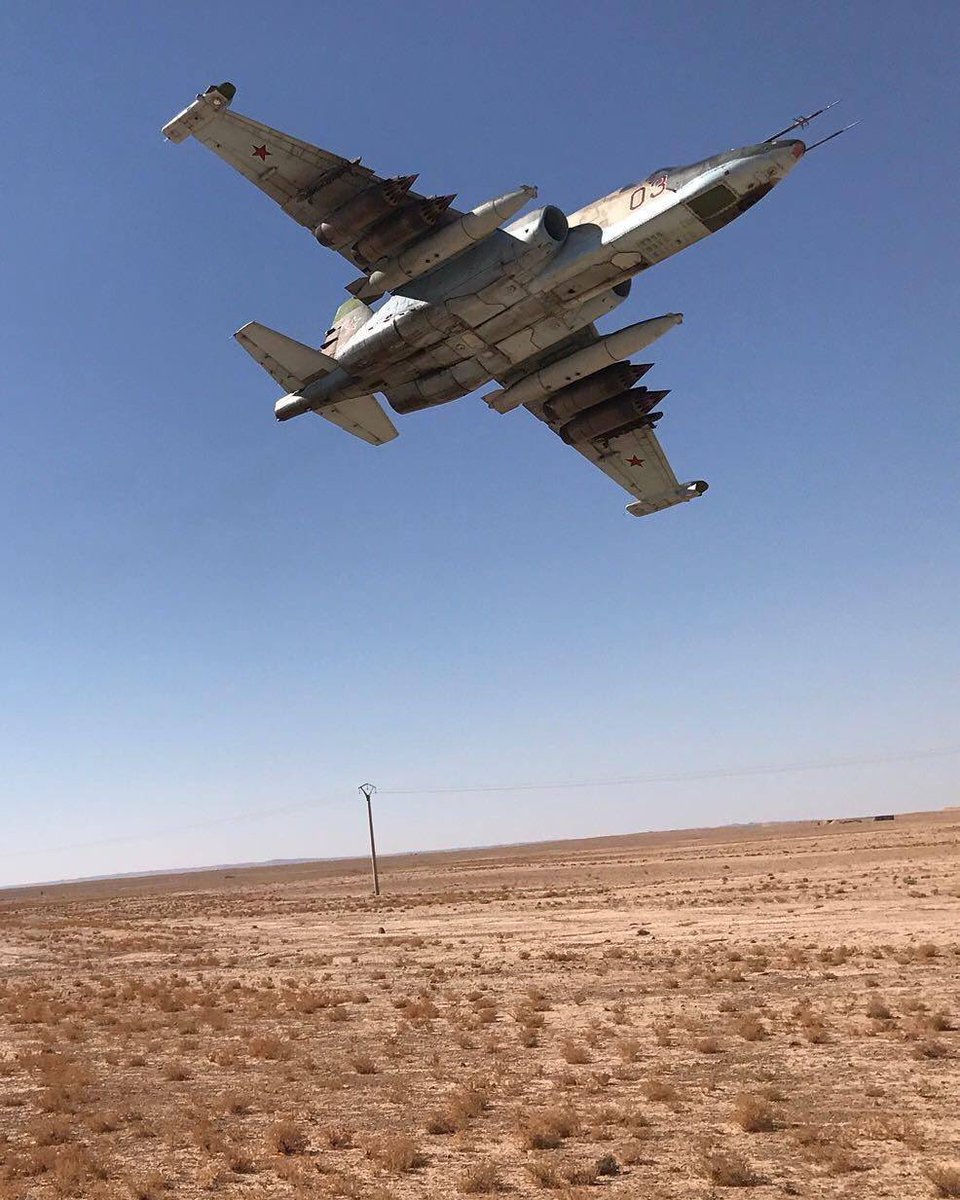
Singha wrote:seems to have defensive aids on wingtips and tail.

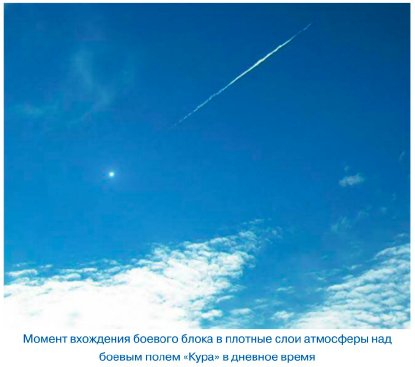
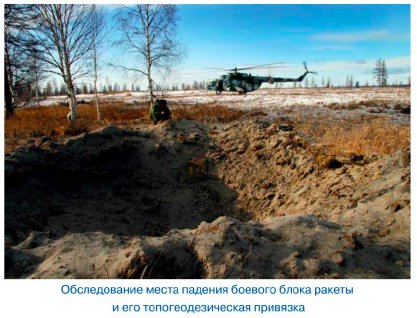
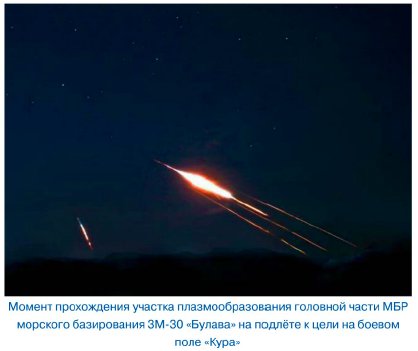
MOSCOW, September 16. /TASS/. During a training flight near the Borisoglebsk aerodrome a Yak-130 aircraft crashed; the crew is safe, the Russian Defense Ministry said on Saturday.
"On September 16, 2017, during a training flight near the Borisoglebsk aerodrome a training-combat Yakovlev Yak-130 aircraft (NATO reporting name: Mitten) crashed," the ministry said in a statement. "The crew directed the aircraft away from the houses and ejected successfully."
..

Jags are DPSA more of our equivalent of Tornado , Su-24 , F-111Singha wrote:Our upgraded jaguars are like the upgraded su25 above
Both are twin engine , fast and stable at low level and
We have rsdar and derby now plus two powerful defa cannons
I say we reengine and zero hour the whole lot and we have our own frogfoot
Thats not the video from Zapad but some earlier videoAshokk wrote:Ka-52 mistakenly fires on journalists during the Zapad-2017 exercises
Wrong, its from Zapad. The details of what happened (in russian) here http://www.rbc.ru/society/20/09/2017/59 ... ?from=mainAustin wrote: Thats not the video from Zapad but some earlier video
"All messages in social networks about" volleys on a crowd of journalists, "" a large number of seriously wounded "- deliberate provocation or someone's personal stupidity," the department said.
It is noted that on the videocassettes laid out in the social network, a case is shown that occurred at another time during helicopter training of "ground attack exercises".
"The system of aiming one of the helicopters was mistakenly captured the target.As a result of hitting an unguided missile, one of the trucks without people was injured," the press service explained.
If you follow local news (in russian) you will know that the MOD always denies (or tries to cover up) any negative news eg. conscripts being beaten up by the "dedovshina", drunk soldiers running amock with tanks/BTR. There are many such news articles in the local papers/websites. Its quite obvious that the video is an amateur video so the question of the MOD releasing it does not arise. If you read the news article you posted, the MOD says that no incidents happened on the 18th which is correct because it allegedly happened on the 16th. BTW there is another video of the same incident on the net from a different angle.Austin wrote:MOD has denied it yesterday, Do you think they will release the video of the incident immediately the same day when it happened without investigating it which might take day and weeks.
The incident did happened but the video floating around and they one you posted is not the one of the incident happened at Zapad 17
https://vpk.name/news/192745_v_minoboro ... e2017.html
Ashokk wrote:If you follow local news (in russian) you will know that the MOD always denies (or tries to cover up) any negative news eg. conscripts being beaten up by the "dedovshina", drunk soldiers running amock with tanks/BTR. There are many such news articles in the local papers/websites. Its quite obvious that the video is an amateur video so the question of the MOD releasing it does not arise. If you read the news article you posted, the MOD says that no incidents happened on the 18th which is correct because it allegedly happened on the 16th. BTW there is another video of the same incident on the net from a different angle.Austin wrote:MOD has denied it yesterday, Do you think they will release the video of the incident immediately the same day when it happened without investigating it which might take day and weeks.
The incident did happened but the video floating around and they one you posted is not the one of the incident happened at Zapad 17
https://vpk.name/news/192745_v_minoboro ... e2017.html
Jags wont do the job of CAS as its not designed for the role , it is a DPSA fighter/bomber may be the Mig-27 would have fared better in the role than Jags due to its variable geometry wings but then again as one 27 pilot mentioned even at slow speed it is too fast to be useful in that role.Philip wrote:Singha,I said the same thing about the Jags a long time ago.Armoured Jags to replace the GA MIG-27s.If we get the 30 + ex-FRench Jags,we can operate another sqd. Since upgrades of all 120 are being made,reopening the Jag line for a few more sqds of GA Jags won't be a problem.They should be cheaper than the LCAs,which are taking aeons to give birth!

So not one, but two such incidents... that's even worseAustin wrote:
MOD is not denying the incident it is just saying the video is not from that incident , The cockpit video wont be released on Internet without MOD knowing about it ..that video is certainly a old video for sure not connected with this incident.
Yeah Shit happens thats life they are lucky they just got away with few burnt cars and no one got injuredManish_P wrote:So not one, but two such incidents... that's even worseAustin wrote:
MOD is not denying the incident it is just saying the video is not from that incident , The cockpit video wont be released on Internet without MOD knowing about it ..that video is certainly a old video for sure not connected with this incident.
The Russian Ministry of Defence’s (MoD’s) 7 September announcement that it was revising plans to permanently remove 10,000 armoured vehicles from its inventory and upgrade T-80 and T-90 series main battle tanks (MBTs) could jeopardise the future of the Armata programme. The announcement together with the reduction in potential orders for the T-14 MBT and the continued decline in Russian defence spending have led some sources to claim that the Armata programme has been cancelled.
Under previous plans, 10,000 reserve vehicles, made available after downsizing the Russian armed forces, were to be melted down by 2020. The revised plan stated that only 4,000 vehicles would be broken down, with the remaining 6,000 kept as a strategic reserve. Russia also plans to upgrade the T-80 to the T-80BVM standard and the T-90 to the T-90M standard as part of a USD417 million contract signed earlier this year. The T-80BVM includes a significant armour upgrade, and the T-90M appears to incorporate many of the improvements from the T-14, such as the commander’s sight with an integrated remotely operated weapon station.
Initial development of the Armata started out with high hopes, but estimates of the number of vehicles to be procured have plummeted downwards since the T-14 and T-15 were unveiled. In 2015, UralVagonZavod (UVZ) CEO Oleg Sienko announced that 2,300 vehicles would be produced by 2020. In 2016, Deputy Defence Minister Yuri Borisov announced the far more sober figure of 100 before 2020, and later in the year, this figure fell to just 70 vehicles, due by the end of 2019. Borisov’s latest announcement, in August 2017, restates his figure of 100 vehicles by 2020, although this presumably includes the approximately 20 vehicles currently undergoing trials in the Russian armed forces.
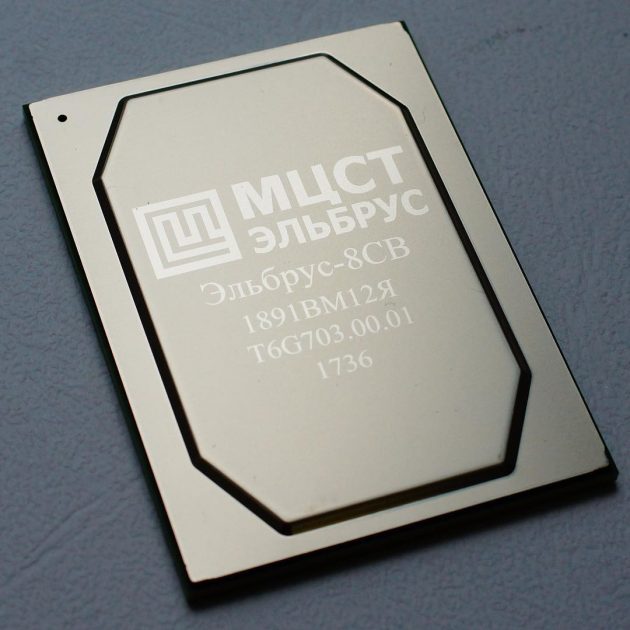


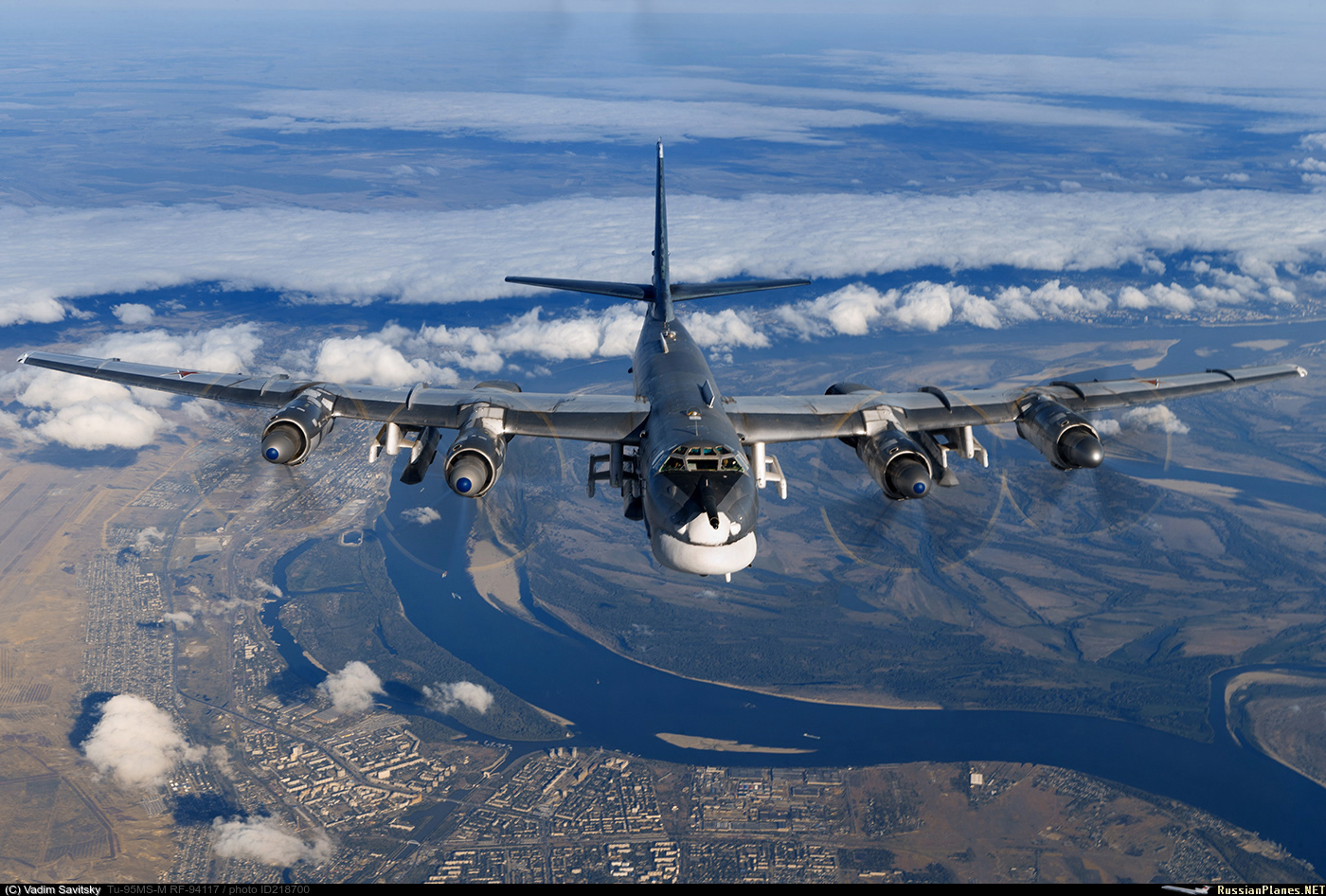
A Russian Defense Ministry official told the country’s state-run TASS news agency that the September 12 test involved an experimental “detachable” warhead design. The test was reportedly successful.
Multiple independently targetable reentry vehicle (MIRV) capable ICBMs normally feature what’s known as a post-boost stage that can maneuver while outside the earth’s atmosphere—after the launch vehicle’s powered flight has concluded at high altitudes—to dispense individual warheads to multiple targets at different approaches, allowing a single ICBM to strike targets separated by great distances.
The independent post-boost vehicle configuration tested by Russia is based on a similar concept, but would presumably allow for more complex and flexible targeting off a single ballistic missile in midcourse. Post-boost vehicles are not considered to be a separate missile stage as they do not generally enhance range; they can allow for more precise guidance and targeting.